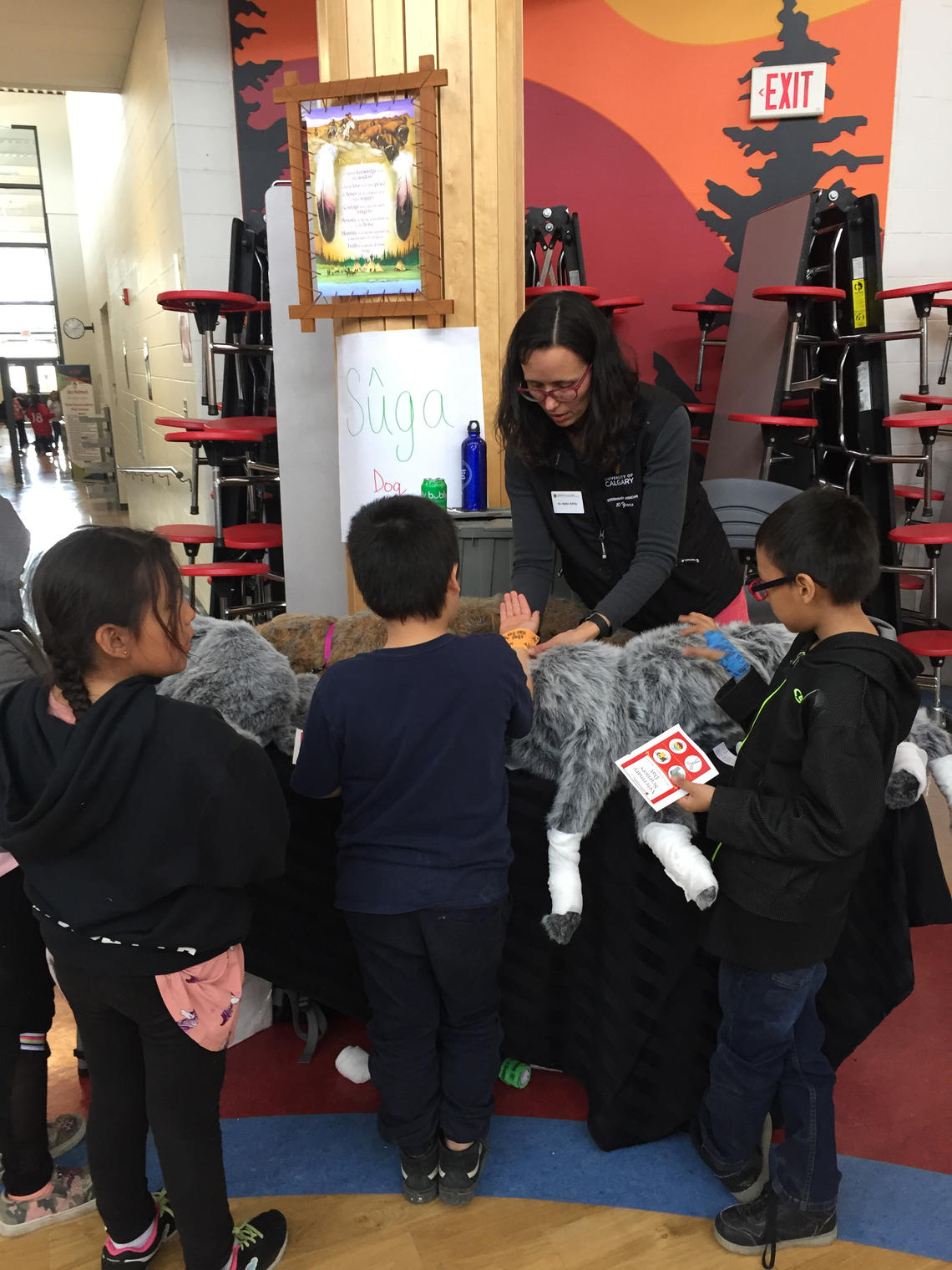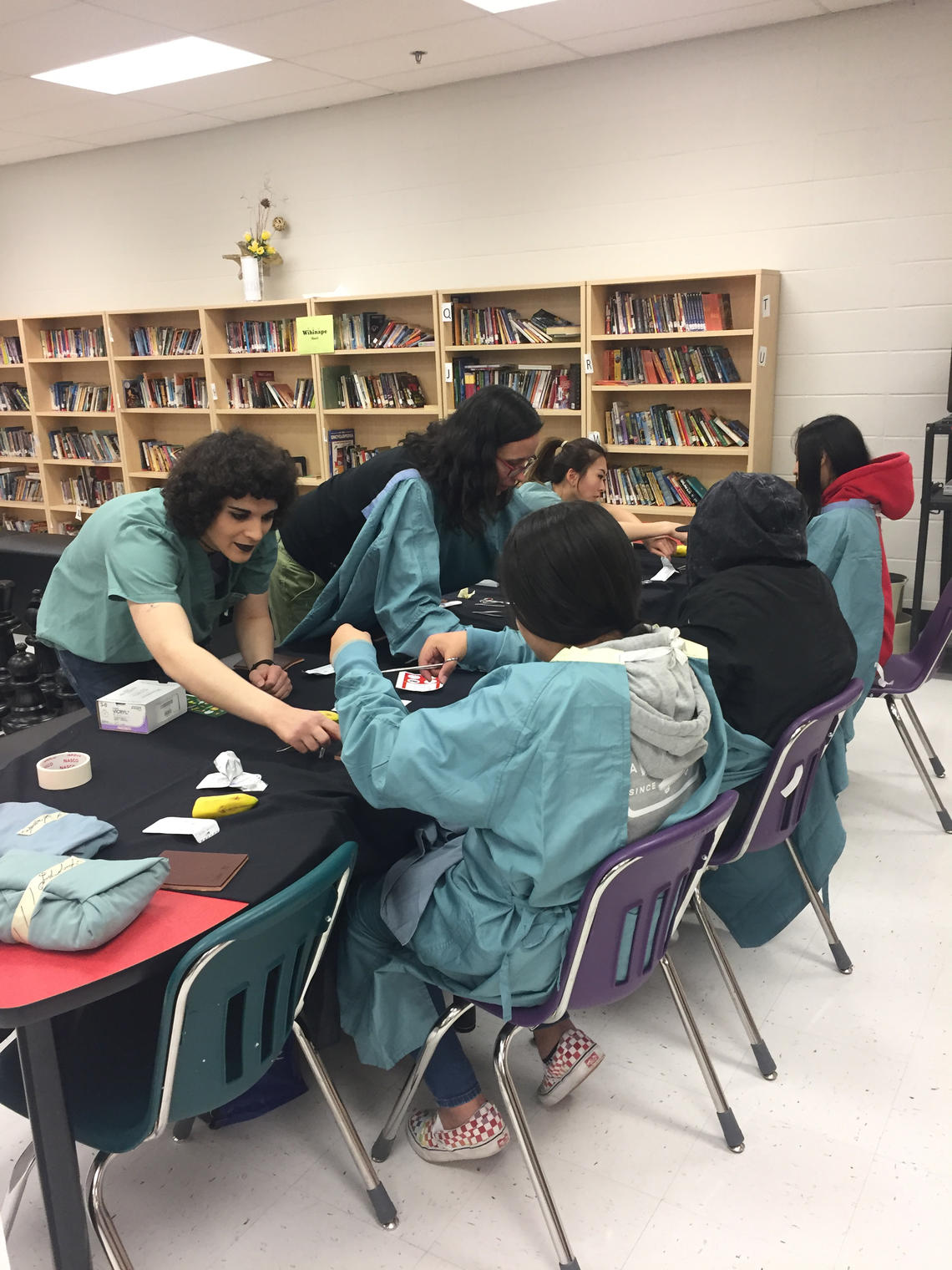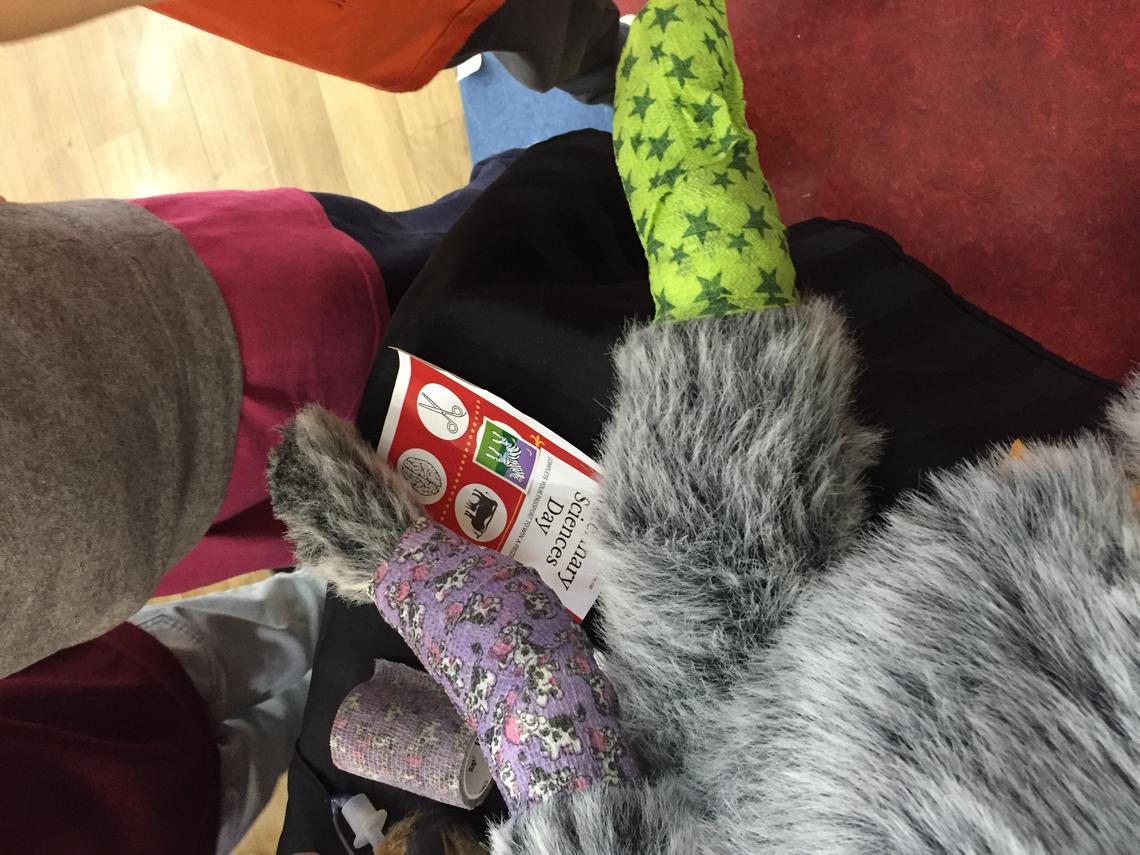July 3, 2019
New partnership with Stoney Nakoda explores importance of animals in Indigenous culture

It’s Veterinary Sciences Day at Nakoda Elementary School. Set up in the school’s bright teepee-shaped atrium are different animal health-themed stations: cow palpation, limb bandaging, horse anatomy. Students in Grades 3 to 5 visit each station in rotation, trying their hand at veterinary medicine.
The event was one of four day-long visits to schools in the Mînî thnî (Morley) community in the past year, part of a new co-learning partnership between the Stoney Nakoda First Nation and the University of Calgary Faculty of Veterinary Medicine (UCVM). Funding came from a grant from the university’s Indigenous Strategy, ii' taa'poh'to'p.
“The initiative fosters a relationship with the community and allows for two-way learning, with their students learning about veterinary science and UCVM participants learning about Stoney Nakoda culture and their perspective around animal health,” says Dr. Cathy Wagg, DVM, a senior instructor at UCVM. Wagg helped initiate the program with Thomas Snow of the Stoney Nakoda, himself a graduate of the University of Calgary.
At some of the school outreach days, Snow and his mother, Alice Kaquitts, a Stoney Elder and UCalgary alumna, participated and shared inspirational words with students, encouraging them to pursue post-secondary education, and to help facilitate cultural learning for the UCVM students.

The initiative allows for two-way learning.
Faculty of Veterinary Medicine
Learning vet med skills and Stoney Nakoda words
Looking at photos from school visits, Wagg points out a picture of a young boy wrapping a simulator dog’s front leg with stretchy yellow bandage.
“We went around in a circle and at every station Alice would tell us the Stoney Nakoda name for the animal we were highlighting. 'Sûga' is the word for dog, so at the dog bandaging station Alice helped us write that on a poster with the English word underneath. The community embraced these visits as an opportunity to reinforce their language around animals and animal health within the school.”
Wagg points to another photo of children wearing surgical garb. “During one of the first visits, we had a surgery station where they could dress up in mask and gown. That was fantastic. The kids spent the rest of the day wearing their caps and their booties,” she says with a smile.
Community hopes the program will be a 'chângu tumbi' (creation of a path) to a Stoney Nakoda veterinarian in future
Snow and Elders on the Stoney Nakoda First Nation Advisory Council are concerned about their young people having opportunities to get into sciences including medicine and veterinary medicine. Programs such as this one are one way to open the door to those possibilities.
“Thomas talked to students at both the elementary and high school about the importance of staying in school, about the opportunities available and the things they can accomplish,” says Wagg. “He said ‘I’m here to tell you that if you want to be a veterinarian, you can do it. In the future, we want you to be one of these veterinary students you see here today’.”

The program is a fun way for students to learn about opportunities in the sciences.
Faculty of Veterinary Medicine
Moving forward together
Wagg looks back at the past year and is happy with the progress they’ve made. There are a number of other projects they want to work on in the coming years, including hosting animal health seminars that involve both the UCVM and Stoney Nakoda communities, and finding opportunities to incorporate Indigenous ways of knowing in relation to animals within the DVM curriculum.
They also want to continue travelling out to Stoney Nakoda to consult and meet with Elders to build a long-term relationship of mutual trust, respect, and reciprocity.
“It's a process, a journey,” says Wagg. “This is just the beginning, but it's an exciting beginning and something we want to keep moving forward together in partnership with the Stoney Nakoda.”
ii’ taa’poh’to’p, the University of Calgary’s Indigenous Strategy, is a commitment to deep evolutionary transformation by reimagining ways of knowing, doing, connecting and being. Walking parallel paths together, ‘in a good way,’ UCalgary will move toward genuine reconciliation and Indigenization.
As part of UCVM’s One Community, One Health Strategic Plan, the faculty is committed to working with, and learning from, Indigenous Canadians, and partnering with the greater UCalgary community to build a sustainable plan for Indigenization.

Bandaging the leg of a simulator dog, or 'Sûga' in the Stoney Nakoda language.
